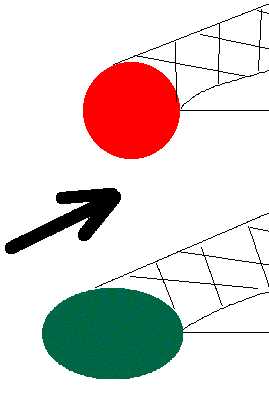2002 diskutierte die IFA das Thema Wing-Mast:
Auszug aus:
INTERNATIONAL FINN ASSOCIATION
2002 ANNUAL GENERAL MEETING
20th July 2002, Athens, Greece
Technical Committee Chairman’s Report 2002
[...]
7. Masts. Currently we have wing masts, which
are expensive to build because of the very precise positioning required for the reinforcing fibres. They are also an engineering nightmare, because the wing shape is not good for resisting torsion.
At the AGM last year in Marblehead, the Technical Committee were instructed to look into the possibility of changing the rules to encourage cheaper masts. In particular,
Tim Tavinor told AGM that he had been in touch with manufacturers who could sell circular section masts at about half the present price. Any action that we take must be fair to the sailors who currently own wing masts, and to the manufacturers who have spent money developing today’s “best sellers”.
There are three main options:
1. Do nothing.
2. Nominate a standard design from approved manufacturers.
3. Specify tighter restrictions on for-and-aft dimensions, so that the masts would be somewhere near round. Review requirements for athwartship dimensions;
Option 1 leaves us committed to masts, which seem un-necessarily expensive.
Option 2 would be very difficult to control, and against the practice of the class developed over many years.
Option 3 could be worded something like “the fore and aft dimension of the mast shall not exceed its athwartship dimension by more than 25 mm at any point along its length”. A way to implement this option would be to allow the new specification masts a small weight advantage, for example 7ּ5 kg. instead of 8 kg, and to allow the wing masts to continue, but not for the 2008 Olympics and major qualifying regattas from 2007 onward.
This year, I have yet again sought opinion on the whole matter, and my chief conclusion is that opinion is very varied. One potential supplier suggests that good cheap (round) Finn Masts could be made at 6.5 kg, but a major manufacturer with a track record of 400+ masts would like the current weight limit increased to 8.5 kg. Another major supplier (200+) states that his current (wing) masts weigh 7.0 – 7.5 kg before correction. Similarly a major supplier of hulls believes that the future of the class is being jeopardised by the high cost of wing masts, while a mast supplier writes “I was at the Paris boat show last December and the interest in the Finn was outstanding. I believe that is because we have a truly modern looking boat.
When I watch people feeling the contours of the wing mast I realise that this is one of the facets of the modern Finn. Now that the class has accepted the cost of a wing mast I still see no reason to make a change; as they say ‘if it ain’t broke don’t fix it’.”
My own conversations with club sailors suggest that they have not willingly “accepted the cost of a wing mast”.
In the light of the diverse opinions expressed within TC and the class as a whole, I recommend that we make no change until after the next Olympics. I seek support for further investigation of the Option 3 outlined above.
Votes needed on submission. (Netherlands Finn Association).
[...]
http://www.finnjolle.se/docs/117.pdf